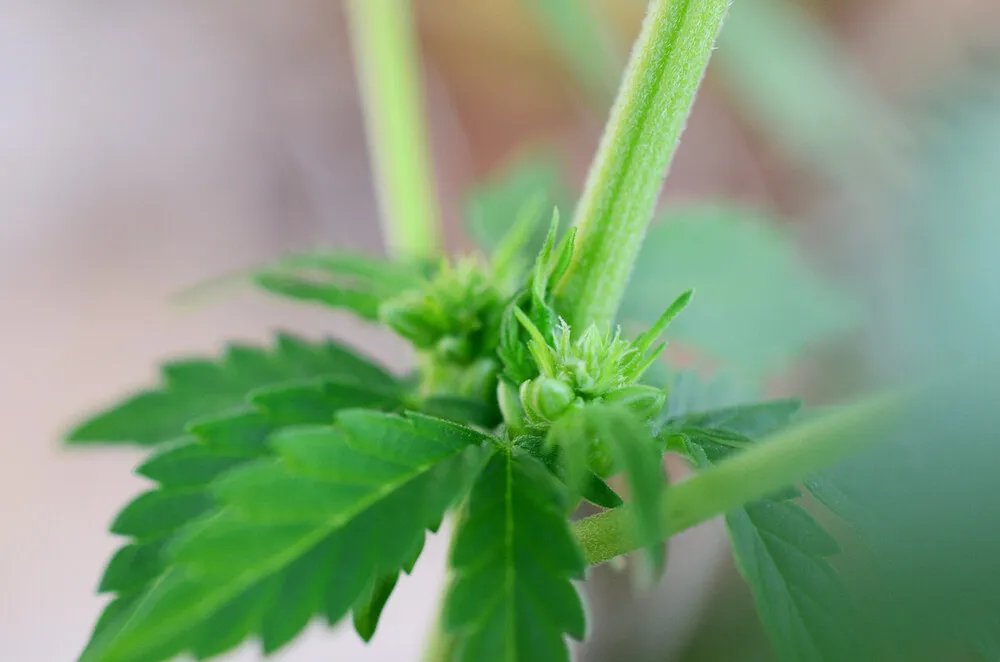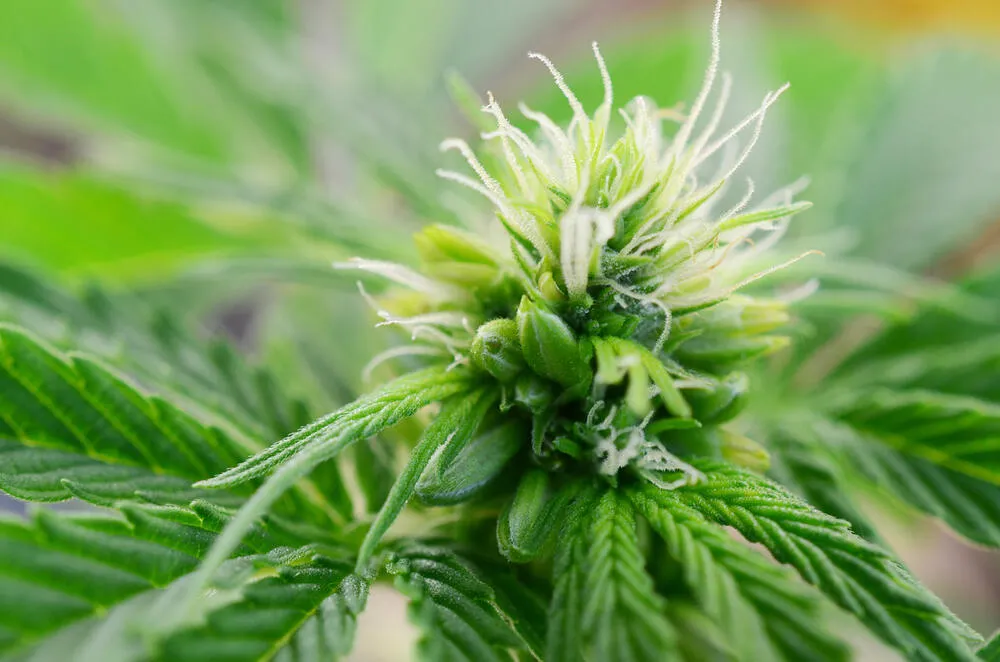One thing that often surprises people new to the art of growing weed is that even seeds grown from feminized seeds sometimes don't perform as planned.
What, really? Feminized seeds can still produce male plants? How is that possible?
Yes indeed. Although feminized seeds offer a 99.9% guarantee that your plant will be a lady, there is still a 0.1% chance that they will turn out to be a dude.
But that's not what we are here to talk about.
The other, but only very slightly more common issue, with feminized (actually all - feminized, regular, or autoflowering) seeds is that they can sometimes produce hermaphroditic, or 'hermie' plants. This happens for a range of reasons, which we will explore in this article. But first, let's define what a hermie plant actually is...
What is a hermaphrodite cannabis plant?
Hermaphroditism in plants essentially means that the plant has both male and female reproductive organs. This happens naturally, usually due to environmental stress, but there is a certain level of genetic predisposition as well. In cannabis, pure sativa cultivars (especially those from Thailand) are more likely to herm than pure indicas.
So, hermie weed plants have both male pollen sacs and female flowers. This means that they have the ability to self-pollinate and do so in times of heavy stress as a last resort to save their genetic line from dying out.
But it's not just themselves that they have the ability to pollinate. Hermie pollen works in exactly the same way as male plant-produced pollen, meaning that it can pollinate any female plants in the vicinity.
What causes a cannabis plant to hermie?
Stress can cause us all to do wild things, but weed plants take that to another level.
Firstly, there is physical stress - this could be anything from broken stems, the plant accidentally falling down, to overtraining. This is one of the main reasons why we always treat our weed plants like the princesses they are as soon as they start flowering. No more aggressive training techniques from the last week or so of vegetative growth!
Next up, we have temperature stress. Weed plants will grow in a surprisingly wide temperature range, but when things start getting too hot or too cold, they can't perform vital processes like photosynthesis efficiently. This is a double whammy for the plant - not only are its physiological processes compromised, but it may also start to freak out about the prospect of dying. This heavy level of stress can also cause plants to turn hermie.
The most common reason for indoor-grown feminized plants to decide to hermie is light stress. Even the slightest little light leak during the "lights off" period can result in a hermie plant. This means that the area you are growing your plants in needs to be absolutely light-tight during the dark period, and you need to make sure that your timer is working properly and consistently. This is much less of an issue for outdoor plants.
Then we have:
- Low-quality seeds - buying inferior seeds can increase the chances of your crop turning hermie. No matter what seeds you are growing you cannot tell the sex of a seed until it is planted, which will be weeks of wasted time by the time your plants show their first signs of gender.
- Low-quality nutrients - speaking of low quality, inferior nutrient mixes could stress your plant out and cause it to hermie.
- pH imbalance - this could be a result of using incorrect nutrients or just bad maintenance. Either way, a pH imbalance can definitely stress your plants out.
- Pest infestations - bugs that are basically eating your plants can cause significant stress and induce hermaphroditism.
- Mold or disease - Plant diseases or molds such as bud rot or root rot can stress a plant causing it to hermie.
- Bad soil - mediocre quality soil can result in a whole host of problems. Ensure you are using nutrient-rich, well-aerated soil to give your plants the best chance of staying healthy.
What are the early signs of a hermie plant?

Okay, now we get to the guts of the issue. What do you actually need to look out for in terms of visual indication that your plant may be on the hermie train?
The very first thing to keep in mind is that plants in the vegetative stage of growth will almost never show signs of hermaphroditism. They simply haven't reached the stage of sexual maturity to be able to turn hermie, so if your plant isn't flowering yet, you don't need to worry.
But if you're in the flowering stage, then these are the things to look out for:
The two different types of hermie pollen sacs, explained
There are two types of hermies in the cannabis world - true (or genetic) hermies and non-true (or intersex/stress-induced hermies).
- True hermies produce pollen sacs that look exactly the same as those made by male cannabis plants. They will be round or rugby ball shaped, almost always green in color, and appear directly below the developing flowers. If this is what you’re seeing, there is a decent chance that the reason your plant turned hermie is due to the genetics, and not a mistake on your part.
- Non-true hermies, on the other hand, produce pollen sacs that look like little bananas (often referred to online as 'nanners’). They will usually appear in clusters of 4 or 5, grow directly out of the flowers, and start a lightish green but slowly turn more of a pale yellow as they mature.
What should you do if you have a hermie in your grow room?

Unless you want to end up with a crop that has been pollinated, then it's time to cut your losses and just get rid of the hermie plant. We know it's really hard to let go of a plant that you have been nurturing for months, but it's much better than risking ruining the rest of the crop.
A single hermie has the ability to pollinate an entire grow room or garden, and it can do so remarkably quickly. In fact, a single pollen sac contains enough pollen to pollinate the entire garden, and just one hermie can pollinate female plants up to 2 miles away if the wind is right.
Some growers think that if you catch the developing pollen sacs early enough and carefully remove them, you can keep the plant in your grow room. If you want to try that, then go ahead, but do so at the risk of ruining the crop.
What can you do to avoid plants turning into hermaphrodites?
It's all about stress management. One of the first things that new growers should have learnt is that you can treat your plants quite roughly during the vegetative growth stage and they will usually bounce back, often even stronger than before. But as soon as those flowers start to grow, it's time to ease off any and all HST and give them all the love and care they may need.
This rule is often time quoted in terms of yield size, but it is just as important for managing and lowering the chances of your plants becoming hermaphrodite.
You can also take these extra precautions to avoid stressing your plants:
- Keep the temperature and humidity levels consistent and within a suitable range (65 to 82 degrees Fahrenheit and 45-55% humidity).
- Check for light leaks regularly (especially during the dark period) and make sure that your timer is functioning correctly.
- Use high-quality seeds from reputable sources - like us here at 420 seeds!
- Invest in decent quality nutrients and maintain a consistent pH level for your plants.
Cannabis hermie FAQS
Do hermie plants produce female seeds?
Yep, if a female plant has turned hermie and self-pollinated, then there is a very high chance that the seeds will be female.
Can a hermaphrodite plant self-reproduce?
Yes, it can self-pollinate and produce seeds. However, these seeds will often have a higher chance of turning into hermies themselves, especially if the seeds come from a 'true hermie'.
Do hermie plants still produce buds?
Yes, but a lot of the energy that would have gone into growing huge buds covered in a thick trichome layer will now be directed towards producing seeds. This results in sub-par nugs full of seeds - the last thing any grower wants.
Can you smoke buds from a hermie plant?
Yep, but they won't be as potent or as tasty as buds from a non-hermie plant. Plus, you'll have to pick through the buds to get the seeds out before you roll up.
Can you reverse a plant that has turned hermie?
No, once a plant shows signs of hermaphroditism, there is no safe way to reverse it back to a purely female plant. Up until a few years ago, a product called "Dutch Master Reverse" was available that could help, but it has been shown to be carcinogenic and have a wide range of other long-term side effects.
Even if you see it being advertised, do not use it on your plants. It's simply not worth the risk. It also changes the terpene and cannabinoid production, so the buds won't be worth s*** anyway.










